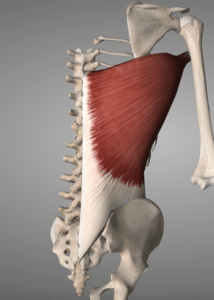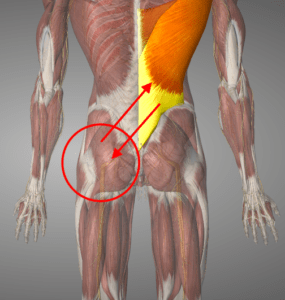If you’ve ever found yourself perplexed by the phenomenon of right hip pain triggering discomfort in your left lower back, you’re not alone. The interconnected web of our musculoskeletal system often holds clues to such mysteries. In this blog post, we’ll explore a fascinating aspect revealed in the article “The posterior layer of the thoracolumbar fascia. Its function in load transfer from spine to legs” by Vleeming A—a key to understanding the relationship between hip and lower back pain.

The Thoracolumbar Fascia: A Structural Maestro
The thoracolumbar fascia is a dense, interconnected network of connective tissue that spans the posterior aspect of our torso. Its primary function, as elucidated by Vleeming A in the article, lies in the intricate task of load transfer—from the spine down to the legs. This dynamic structure plays a crucial role in maintaining stability and balance throughout the body.

Understanding Load Transfer: A Balancing Act
When we move or bear weight, the forces generated need to be distributed efficiently to ensure optimal function and prevent strain. The thoracolumbar fascia acts as a bridge, facilitating the transfer of loads generated in the spine down to the lower extremities. It’s a key player in maintaining the integrity of our posture and supporting movements such as walking, running, and even simple weight shifts.
The Crossed Connections: Hip to Lower Back
Now, let’s connect the dots between right hip pain and left lower back discomfort. The thoracolumbar fascia, being a continuous and interconnected structure, can transmit tension and forces across its entire expanse. If there’s dysfunction or imbalance in one area, it can reverberate across the fascia, affecting seemingly unrelated regions.
For instance, if your right hip is experiencing pain or tension, it can create a ripple effect through the thoracolumbar fascia, potentially manifesting as compensatory movements or imbalances. This, in turn, may lead to increased stress on the left lower back, resulting in pain and discomfort.
Strategies for Relief and Recovery:
- Addressing Hip Imbalances: Through targeted physical therapy exercises, you can address muscle imbalances and improve the function of the hip joint.
- Thoracolumbar Fascia Release: Techniques such as myofascial release or targeted stretches can help alleviate tension in the thoracolumbar fascia, promoting better load distribution.
- Core Strengthening: A strong and balanced core contributes to the stability of the entire musculoskeletal system, reducing the likelihood of compensatory patterns.
- Posture Awareness: Being mindful of your posture in daily activities can prevent undue stress on the thoracolumbar fascia and associated structures.
The thoracolumbar fascia emerges as a central orchestrator. Understanding its role in load transfer provides valuable insights into the connection between seemingly disparate areas of pain—such as right hip pain triggering left lower back discomfort. By unraveling these connections, we empower ourselves to address imbalances, promote healing, and foster a harmonious relationship between our hips and lower back. If you’re grappling with this interplay of pain, consulting with a physical therapist can provide personalized strategies for relief and long-term well-being.

